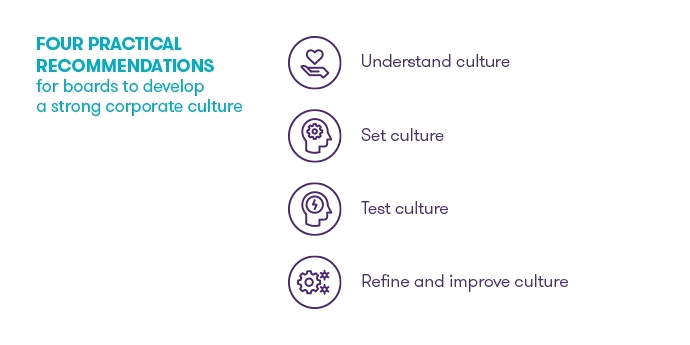-
Why Grant Thornton
Whether you’re growing in one market or many, looking to operate more effectively, managing risk and regulation, or realising stakeholder value, our firms can help.
-
Culture and experience
Grant Thornton’s culture is one of our most valuable assets and has steered us in the right direction for more than 100 years.
-
Global scale and capability
Beyond global scale, we embrace what makes each market unique, local understanding on a global scale.
-
Join our network
In a world that wants more options for high quality services, we differentiate in the market to grow sustainably in today’s rapidly changing environment.
-
Leadership governance and quality
Grant Thornton International Ltd acts as the coordinating entity for member firms in the network with a focus on areas such as strategy, risk, quality monitoring and brand.
-
Africa
24 member firms supporting your business.
-
Americas
31 member firms, covering 44 markets and over 20,000 people.
-
Asia-Pacific
19 member firms with nearly 25,000 people to support you.
-
Europe
53 member firms supporting your business.
-
Middle East
8 member firms supporting your business.
-
Business consulting services
Our business consulting services can help you improve your operational performance and productivity, adding value throughout your growth life cycle.
-
Business process solutions
We can help you identify, understand and manage potential risks to safeguard your business and comply with regulatory requirements.
-
Business risk services
The relationship between a company and its auditor has changed. Organisations must understand and manage risk and seek an appropriate balance between risk and opportunities.
-
Cybersecurity
As organisations become increasingly dependent on digital technology, the opportunities for cyber criminals continue to grow.
-
Forensic services
At Grant Thornton, we have a wealth of knowledge in forensic services and can support you with issues such as dispute resolution, fraud and insurance claims.
-
Mergers and acquisitions
We work with entrepreneurial businesses in the mid-market to help them assess the true commercial potential of their planned acquisition and understand how the purchase might serve their longer-term strategic goals.
-
Recovery and reorganisation
Workable solutions to maximise your value and deliver sustainable recovery.
-
Transactional advisory services
We can support you throughout the transaction process – helping achieve the best possible outcome at the point of the transaction and in the longer term.
-
Valuations
We provide a wide range of services to recovery and reorganisation professionals, companies and their stakeholders.
-
Sustainability advisory
We can assist you with a variety of sustainability advice depending on your needs, ranging from initial strategy development, reporting and compliance support, through to carbon measurement and management.

-
IFRS
At Grant Thornton, our IFRS advisers can help you navigate the complexity of financial reporting from IFRS 1 to IFRS 17 and IAS 1 to IAS 41.
-
Audit quality monitoring
Having a robust process of quality control is one of the most effective ways to guarantee we deliver high-quality services to our clients.
-
Global audit technology
Our global assurance technology platform provides the ability to conduct client acceptance, consultations and all assurance and other attestation engagements.
-
Sustainability assurance
Our sustainability assurance services are based on our global network of specialists, helping you make more efficient decisions for the good of your organisation.

-
Corporate and business tax
Our trusted teams can prepare corporate tax files and ruling requests, support you with deferrals, accounting procedures and legitimate tax benefits.
-
Direct international tax
Our teams have in-depth knowledge of the relationship between domestic and international tax laws.
-
Global mobility services
Through our global organisation of member firms, we support both companies and individuals, providing insightful solutions to minimise the tax burden for both parties.
-
Indirect international tax
Using our finely tuned local knowledge, teams from our global organisation of member firms help you understand and comply with often complex and time-consuming regulations.
-
Transfer pricing
The laws surrounding transfer pricing are becoming ever more complex, as tax affairs of multinational companies are facing scrutiny from media, regulators and the public
-
Africa tax desk
A differentiating solution adapted to the context of your investments in Africa.
-
Sustainability tax
Through our sustainability tax advisory services, we can advise how environmental taxes, incentives, and obligations can impact your progress, requiring alignment with governmental and legislative pressures.

-
 Banking Holding banking to account: the real diversity and inclusion pictureWe explore how the banking sector can continue to attract, retain and nurture women to build a more diverse and inclusive future.
Banking Holding banking to account: the real diversity and inclusion pictureWe explore how the banking sector can continue to attract, retain and nurture women to build a more diverse and inclusive future. -
 Sustainability From voluntary to mandatory ESG: How banks can future-proof their operationsAs we move from voluntary ESG initiatives to mandatory legislation, we explore what the banking sector needs to prioritise.
Sustainability From voluntary to mandatory ESG: How banks can future-proof their operationsAs we move from voluntary ESG initiatives to mandatory legislation, we explore what the banking sector needs to prioritise. -
 IFRS IFRS 9 - Audit of Expected Credit LossesGPPC releases The Auditor’s response to the risks of material misstatement posed by estimates of expected credit losses under IFRS 9
IFRS IFRS 9 - Audit of Expected Credit LossesGPPC releases The Auditor’s response to the risks of material misstatement posed by estimates of expected credit losses under IFRS 9 -
 growthiQ Steering your company to long-term successHistory has something important to tell us about the difficulties of steering a business to long-term success – through seismic shifts in technology, consumer demands and product development. With that in mind it’s unsurprising that over half the world’s largest companies in the early 1900s had shut their doors by the late 1990s. Some, however, have endured.
growthiQ Steering your company to long-term successHistory has something important to tell us about the difficulties of steering a business to long-term success – through seismic shifts in technology, consumer demands and product development. With that in mind it’s unsurprising that over half the world’s largest companies in the early 1900s had shut their doors by the late 1990s. Some, however, have endured.
-
 International Financial Reporting Standards Implementation of IFRS 17 ‘Insurance Contracts’The auditor’s response to the risks of material misstatement arising from estimates made in applying IFRS 17 ‘Insurance Contracts’
International Financial Reporting Standards Implementation of IFRS 17 ‘Insurance Contracts’The auditor’s response to the risks of material misstatement arising from estimates made in applying IFRS 17 ‘Insurance Contracts’ -
 IFRS Get ready for IFRS 17After twenty years of development the IASB has published IFRS 17 ‘Insurance Contracts’, find out more.
IFRS Get ready for IFRS 17After twenty years of development the IASB has published IFRS 17 ‘Insurance Contracts’, find out more.
-
 Global business pulse - industry analysis Mid-market recovery spreads to more industriesThe index results for 13 key industries of the mid-market reveals a very uneven recovery from COVID-19
Global business pulse - industry analysis Mid-market recovery spreads to more industriesThe index results for 13 key industries of the mid-market reveals a very uneven recovery from COVID-19 -
 Global business pulse - industry analysis A very uneven recovery across industriesThe index results for 13 key industries of the mid-market reveals a very uneven recovery from COVID-19
Global business pulse - industry analysis A very uneven recovery across industriesThe index results for 13 key industries of the mid-market reveals a very uneven recovery from COVID-19 -
 Global business pulse - Sector analysis Clear patterns of damage from COVID-19 across the industriesThe index results for 12 key sectors of the mid-market reveal just how much or little the various parts of the economy were impacted by COVID-19.
Global business pulse - Sector analysis Clear patterns of damage from COVID-19 across the industriesThe index results for 12 key sectors of the mid-market reveal just how much or little the various parts of the economy were impacted by COVID-19. -
 Not for profit Mission: possible – putting impact at the heart of charityGlobal charitable continues to decline and charity leaders are increasingly looking at their own unique impact journey.
Not for profit Mission: possible – putting impact at the heart of charityGlobal charitable continues to decline and charity leaders are increasingly looking at their own unique impact journey.
-
 Access to finance Raise finance to invest in changePrepare your business to raise finance to invest in change.
Access to finance Raise finance to invest in changePrepare your business to raise finance to invest in change. -
 Private equity firms Private equity in the mid-market: reshaping strategies for 2021When the global COVID-19 pandemic stormed across the globe in early 2020, the private equity sector was hit hard but deals are coming back to the market.
Private equity firms Private equity in the mid-market: reshaping strategies for 2021When the global COVID-19 pandemic stormed across the globe in early 2020, the private equity sector was hit hard but deals are coming back to the market. -
 Mid-market businesses Getting ready for private equity investmentOur specialists explore how private equity firms are now working with their portfolios and how the mid-market can benefit from investment.
Mid-market businesses Getting ready for private equity investmentOur specialists explore how private equity firms are now working with their portfolios and how the mid-market can benefit from investment. -
 Mid-market businesses Myth-busting private equityNervous about partnering with Private Equity? We explore some of the common myths we come across when speaking to mid-market businesses about PE investment.
Mid-market businesses Myth-busting private equityNervous about partnering with Private Equity? We explore some of the common myths we come across when speaking to mid-market businesses about PE investment.
-
 Public sector Helping build the government of tomorrow, todayLearn about the Grant Thornton US public sector team.
Public sector Helping build the government of tomorrow, todayLearn about the Grant Thornton US public sector team. -
 Global business pulse - industry analysis Mid-market recovery spreads to more industriesThe index results for 13 key industries of the mid-market reveals a very uneven recovery from COVID-19
Global business pulse - industry analysis Mid-market recovery spreads to more industriesThe index results for 13 key industries of the mid-market reveals a very uneven recovery from COVID-19 -
 Global business pulse - industry analysis A very uneven recovery across industriesThe index results for 13 key industries of the mid-market reveals a very uneven recovery from COVID-19
Global business pulse - industry analysis A very uneven recovery across industriesThe index results for 13 key industries of the mid-market reveals a very uneven recovery from COVID-19 -
 Global business pulse - Sector analysis Clear patterns of damage from COVID-19 across the industriesThe index results for 12 key sectors of the mid-market reveal just how much or little the various parts of the economy were impacted by COVID-19.
Global business pulse - Sector analysis Clear patterns of damage from COVID-19 across the industriesThe index results for 12 key sectors of the mid-market reveal just how much or little the various parts of the economy were impacted by COVID-19.
-
 Industries European Real Estate PodcastJessica Patel, Tax Partner at Grant Thornton UK speaks with tax partners and directors across the network to share their insights on the real estate market and some of the challenges.
Industries European Real Estate PodcastJessica Patel, Tax Partner at Grant Thornton UK speaks with tax partners and directors across the network to share their insights on the real estate market and some of the challenges. -
 Industries European Real Estate PodcastJessica Patel, Tax Partner at Grant Thornton UK speaks with tax partners and directors across the network to share their insights on the real estate market and some of the challenges.
Industries European Real Estate PodcastJessica Patel, Tax Partner at Grant Thornton UK speaks with tax partners and directors across the network to share their insights on the real estate market and some of the challenges. -
 Global business pulse - industry analysis Mid-market recovery spreads to more industriesThe index results for 13 key industries of the mid-market reveals a very uneven recovery from COVID-19
Global business pulse - industry analysis Mid-market recovery spreads to more industriesThe index results for 13 key industries of the mid-market reveals a very uneven recovery from COVID-19 -
 Global business pulse - industry analysis A very uneven recovery across industriesThe index results for 13 key industries of the mid-market reveals a very uneven recovery from COVID-19
Global business pulse - industry analysis A very uneven recovery across industriesThe index results for 13 key industries of the mid-market reveals a very uneven recovery from COVID-19
-

-
 Global business pulse - industry analysis Mid-market recovery spreads to more industriesThe index results for 13 key industries of the mid-market reveals a very uneven recovery from COVID-19
Global business pulse - industry analysis Mid-market recovery spreads to more industriesThe index results for 13 key industries of the mid-market reveals a very uneven recovery from COVID-19 -
 Global business pulse - industry analysis A very uneven recovery across industriesThe index results for 13 key industries of the mid-market reveals a very uneven recovery from COVID-19
Global business pulse - industry analysis A very uneven recovery across industriesThe index results for 13 key industries of the mid-market reveals a very uneven recovery from COVID-19 -
 Retail How retail is positioning for successCOVID-19 provided some hard lessons for the retail industry. It is time to turn those into sustainable and well executed growth strategies in 2021.
Retail How retail is positioning for successCOVID-19 provided some hard lessons for the retail industry. It is time to turn those into sustainable and well executed growth strategies in 2021.
-
 Technology Mid-market tech companies lead the way on diversity and inclusionWe explore how the mid-market tech sector can continue to build and nurture a culture that’s increasingly more diverse and inclusive for women.
Technology Mid-market tech companies lead the way on diversity and inclusionWe explore how the mid-market tech sector can continue to build and nurture a culture that’s increasingly more diverse and inclusive for women. -
 Tax Resetting global tax rules after the pandemicBusinesses are seeing rising challenges, and finance heads are dealing with a range of new measures. To say the next 12 months are critical for businesses is an understatement.
Tax Resetting global tax rules after the pandemicBusinesses are seeing rising challenges, and finance heads are dealing with a range of new measures. To say the next 12 months are critical for businesses is an understatement. -
 TECHNOLOGY International tax reform: the potential impact on the technology industryIn this article, we’ve summarised key elements of the global tax reform proposals, their potential impact on technology industry and advice from our digital tax specialists on what technology companies can do to prepare.
TECHNOLOGY International tax reform: the potential impact on the technology industryIn this article, we’ve summarised key elements of the global tax reform proposals, their potential impact on technology industry and advice from our digital tax specialists on what technology companies can do to prepare. -
 TMT TMT industry: Fully charged or on standby?Our research revealed five key trends that resonated with Technology, Media and Telecoms (TMT) industry leaders around the world. We asked a panel of our experts from UK, US, India Ireland and Germany, to give us their reaction to the findings.
TMT TMT industry: Fully charged or on standby?Our research revealed five key trends that resonated with Technology, Media and Telecoms (TMT) industry leaders around the world. We asked a panel of our experts from UK, US, India Ireland and Germany, to give us their reaction to the findings.
-
 TMT TMT industry: Fully charged or on standby?Our research revealed five key trends that resonated with Technology, Media and Telecoms (TMT) industry leaders around the world. We asked a panel of our experts from UK, US, India Ireland and Germany, to give us their reaction to the findings.
TMT TMT industry: Fully charged or on standby?Our research revealed five key trends that resonated with Technology, Media and Telecoms (TMT) industry leaders around the world. We asked a panel of our experts from UK, US, India Ireland and Germany, to give us their reaction to the findings. -
 Cybersecurity One size fits nothingTechnology companies must adopt a new approach to digital risk: those that successfully develop a reputation for digital trust by demonstrating an unwavering commitment to cyber security and data privacy will be able to carve out a competitive advantage.
Cybersecurity One size fits nothingTechnology companies must adopt a new approach to digital risk: those that successfully develop a reputation for digital trust by demonstrating an unwavering commitment to cyber security and data privacy will be able to carve out a competitive advantage. -
 Technology, media & telecommunications Why it’s time for a 5G reality checkFigures suggest the mobile sector is maturing. While data usage continues to soar, mobile revenues are expected to flatten out over the next few years.
Technology, media & telecommunications Why it’s time for a 5G reality checkFigures suggest the mobile sector is maturing. While data usage continues to soar, mobile revenues are expected to flatten out over the next few years. -
 GrowthiQ Is blockchain right for your business?Blockchain has been seized upon by the financial services sector, where it is playing a crucial role in tracking and authenticating transactions.
GrowthiQ Is blockchain right for your business?Blockchain has been seized upon by the financial services sector, where it is playing a crucial role in tracking and authenticating transactions.
-
 International business Mid-market businesses lifted by rising tide of optimismOptimism among global mid-market business leaders rose to 67% in the first half of this year and they are markedly more optimistic about their prospects with global optimism having increased by 8%.
International business Mid-market businesses lifted by rising tide of optimismOptimism among global mid-market business leaders rose to 67% in the first half of this year and they are markedly more optimistic about their prospects with global optimism having increased by 8%. -
 Global business pulse - industry analysis Mid-market recovery spreads to more industriesThe index results for 13 key industries of the mid-market reveals a very uneven recovery from COVID-19
Global business pulse - industry analysis Mid-market recovery spreads to more industriesThe index results for 13 key industries of the mid-market reveals a very uneven recovery from COVID-19 -
 Hotels COVID-19: Checking in with the hotel industry one year onCOVID-19 provided some hard lessons for the hotel sector. It is time to turn those into sustainable and well executed growth strategies.
Hotels COVID-19: Checking in with the hotel industry one year onCOVID-19 provided some hard lessons for the hotel sector. It is time to turn those into sustainable and well executed growth strategies. -
 Global business pulse - industry analysis A very uneven recovery across industriesThe index results for 13 key industries of the mid-market reveals a very uneven recovery from COVID-19
Global business pulse - industry analysis A very uneven recovery across industriesThe index results for 13 key industries of the mid-market reveals a very uneven recovery from COVID-19
- By topic
-
Women in Business 2025
For 21 years, the Women in Business report has tracked the proportion of women in senior roles in the mid-market. Progress has been made but with gender equity over 25 years away, that isn’t soon enough.
-
The journey to a sustainable future
The world needs a sustainable mid-market. It’s vital to economies, societies and the planet. Businesses, governments, and other stakeholders must work collaboratively to make sure this vital part of the world economy succeeds.
-
Navigating tariffs
Traditional global export markets continue to shift as tariffs are introduced, presenting a challenge for mid-market firms
-
International business: Mid-market growth and expansion
The mid-market looks to international business opportunities for growth.
-
Women in Business 2025: Impacting the missed generation
The 2025 Women in Business report explores the external pressures and internal drivers that impact gender diversity in senior roles in the mid-market.
-
Women in tech: A pathway to gender balance in top tech roles
Grant Thornton’s 2024 Women in Business data suggests we are far from achieving parity within the mid-market technology sector.
-
Women in leadership: a pathway to better performance
What makes the benefits of gender parity compelling is the impact it can have on commercial performance.
-
Women in Business 2024
2024 marks the 20th year of Women in business where we monitor and measure the proportion of women occupying senior management roles around the world.
-
Women in business: Regional picture
We saw an increase in the percentage of senior management roles held by women, on a global level, but there are some significant regional and country variations.
-
Pathways to Parity: Leading the way
To push towards parity of senior management roles held by women, who leads within an organisation is vital.
-
Generating real change with a long-term focus
The most successful strategy to achieve parity of women in senior management is one which stands alone, independent of an ESG strategy.
-
People at the heart of great business
Businesses have started to put guidelines and incentives in place, focused on driving employees back to the office.
-
The journey to a sustainable future
The world needs a sustainable mid-market. It’s vital to economies, societies and the planet. Businesses, governments, and other stakeholders must work collaboratively to make sure this vital part of the world economy succeeds.
-
Ten considerations for preparing TCFD climate-related financial disclosures
Insights for organisations preparing to implement the International Sustainability Standards Board (ISSB)’s Standards.
-
COP28
COP28 was the first time there has been a global stocktake on progress against the Paris Agreement.
-
Transition Plan Taskforce publishes its final disclosure framework
As organisations in the private sector make commitments and plans to reach net zero, there's a growing need for stakeholders to be able to assess the credibility of their transition plans.
-
Promoting ESG excellence through tax
ESG considerations have never been more important for an organisation’s long-term success, but how can tax be used to add value to an ESG agenda?
-
International business: Mid-market growth and expansion
The mid-market looks to international business opportunities for growth.
-
Top five constraints to international business in the mid-market
Top five major constraints that are testing the mid-market’s ability to grow their businesses internationally.
-
Brand and international marketing – breaking global barriers
Brand has been identified as a key driver of mid-market success when looking to grow and develop international business.
-
The key to international business: Investing in people
How can recruitment and retention help grow international business?
-
Building resilience in international business
Evolving supply chains and trade patterns amid ongoing global uncertainty.
-
Example Financial Statements
The 2025 Interim Financial Statements provide general guidance on preparing interim financial statements in accordance with IFRS Accounting Standards.
-
IFRS 8
Our ‘Insights into IFRS 8’ series considers some key implementation issues and includes interpretational guidance in certain problematic areas.
-
IFRS 16
Are you ready for IFRS 16? This series of insights will help you prepare.
-
IAS 36
Insights into IAS 36 provides assistance for preparers of financial statements and help where confusion has been seen in practice.
-
IFRS 17
Explaining the key features of the Standard and providing insights into its application and impact.
-
Pillar 2
Key updates and support for the global implementation of Pillar 2.
-
Global expatriate tax guide
Growing businesses that send their greatest assets – their people – overseas to work can face certain tax burdens, our global guide highlights the common tax rates and issues.
-
International indirect tax guide
Navigating the global VAT, GST and sales tax landscape.
-
Global transfer pricing guide
Helping you easily find everything you need to know about the rules and regulations regarding transfer pricing and Country by Country reporting for every country you do business with.
Growing pains start early
Bhanu Prakash Kalmath S J, Partner at Grant Thornton India LLP, sets the scene. “Culture is vital to enable an organisation to grow in the right manner. Initially, when a company is small, it typically sees the founder as the one who defines the culture. Whether explicitly or implicitly, it’s their behaviour that defines the culture of the organisation. But, as the organisation grows, they have to define and communicate the culture they want. It’s important for them to communicate more to drive the right culture and to assess the feedback.”
Karen Brice, who heads up the client facing leadership and culture practice at Grant Thornton UK, agrees: “One of the biggest challenges that small businesses face in executing a strategy of fast growth is what happens if performance starts to flat-line?
"The leaders are often brilliant business developers and networkers but aren’t always so skilled in managing people who don’t necessarily share their passion and drive. For a business to be successful, its leaders need to be as connected with the values and culture, as they are with the strategic plans. Growing pains are a necessary part of business growth but they can be mitigated by getting people to really buy into both the strategy and the culture – and that requires confident, accessible leaders demonstrating ownership and alignment.”
Learning from others’ mistakes
A common misconception that emerges as companies grow larger is that anything to do with culture is ‘soft and fluffy’ and can only get in the way of driving action and results. In fact, the opposite is true. Creating a great place to work for your people isn’t simple but it’s worth the effort because when achieved, it generates a workplace where motivation levels and talent retention are high and the organisation stands out in the recruitment market; all critical factors in the achievement of targets.
As Karen puts it: “Great company cultures aren’t actually soft and fluffy – they are anything but. High performing organisations have cultures that value recognition and accountability in equal measure. It should be a goal for all organisations that they require everyone to contribute positively at all levels to the employee and client experience. That means holding negative behaviours and actions to account at all levels of the organisation. But how many actually achieve that?
"Financial services is a good example of a sector where regulation requires accountability at board level for execution of a positive culture. No one doubts that translating that into accountable action through governance, risk and conduct is tricky, but it’s a worthwhile challenge and, if achieved, delivers significant return on investment.”
Another mistake organisations make as they grow is that the responsibility for culture tends to rest with the HR Director. Research shows that boards who balance their agenda between the ‘what’ and the ‘how’ are far more likely to be successful and sustainable.
“It still surprises me that at board level, it’s still ok to avoid peer accountability around owning and driving a positive culture from the top,” says Karen. “Tackling the real elephant in the room, namely their own leadership behaviours and interactions, can just be a step too far – and yet how can boards be effective without that?”
Boards need to lead the way
Although Indian boards are clearly taking corporate culture seriously, Bhanu explains that the country has many examples of failure at companies of varying size. “In many cases, CEOs with great skills have been appointed. But they have not necessarily been culturally aligned to the organisation or its founders. As such, they have found it difficult to sustain and grow the business. When hiring a CEO, companies and founders need to consider the importance of their fit with the organisation’s culture. It needs to be given equal weighting with skills.”
In this respect, Bhanu points to the importance of independent directors on boards. “It’s up to directors to constantly hold a mirror to the CEO or the founding partners. They have to ensure they communicate the right culture, so that the organisation picks it up and people follow it. Communication is key at all layers of the organisation. Everyone needs to be aware of what is expected from them.
“It’s a key role of directors to constantly give feedback and moderate the founder or CEO so they are communicating the right messages. Sometimes boards have failed in this area. Regulators have recognised the importance of role of independent directors in this aspect and are now reviewing their role.”
Millennials and strategic objectives
Recruitment and retention are also key considerations. Earlier this year Grant Thornton UK worked with Hay Group on a series of webinars (i), bringing their research into ‘What Workers Want’ to market. While 45% of decision-making around ‘should I go or should I stay?’(ii) was down to salary, the second most important driver was culture.
Karen explains: “The data showed that 25% of decision-making around jobs related to ‘is this a place I want to work? Is it an organisation I can trust to provide the type of culture that will engage and stretch me?”
Millennials are also interested in the ethics of the organisation’s purpose. “When we ask our graduates why they have chosen to work at Grant Thornton, the response often relates to our strong purpose of enabling a vibrant economy and supporting organisations to build into strong, dynamic businesses, regardless of their size. Young people want to know that they can make a difference and that they have a voice.”
Culture: stuck in the middle?
For many organisations, the biggest challenges aren’t necessarily at the top or at the bottom of the hierarchy: they’re in the middle. Sir Win Bischoff, Chairman of the UK’s Financial Reporting Council, had this to say in 2016:
“Culture change is more easily achievable at the top and bottom, through a hiring and induction process, but there is a vast and important middle level you have to convince. Changing a culture is very difficult because that middle level of people has been with the firm for five, ten or 15 years. To change culture, you almost need to have a disaster for that big middle group to want to change.”
Bhanu agrees: “One of the elements that companies are now realising is the impact or the importance of middle management. The junior team always looks up to the immediate middle management and then to the next level. So it’s important for the middle management to be aligned. Many companies have started to hold orientation programmes and training sessions for them to drive the desired culture.”
Karen adds: “One of the most productive ways to engage people in the middle tiers is by ensuring they know they have a vital part to play in translating the narrative around the strategy and culture into action, regardless of function. Getting the values and behaviours aligned and embedded across the teams so they think and act as a single community is one of the most powerful enablers for change an organisation has in its toolkit.”
‘The right thing to do’
Despite the alarmist headlines, there are organisations doing great work with regard to culture, not least in the financial services sector. Karen says: “If we look at the leading organisations in this sector, we see them outperforming their counterparts in the key matrices of employee and customer experience, attraction versus attrition, and financial performance.”
She goes on to say: “It often has as much to do with them making the best of what they have and what they do, rather than keep reinventing the wheel and increasing complexity. Successful boards and leaders know how to grow their businesses by linking all the elements of a future fit organisation to narrative and execution; namely purpose, vision, strategy, culture, decision making frameworks and policies.”
And as Bhanu notes: “Frameworks are essential but, when in doubt, people need to be able to identify the right thing to do and that comes down to culture.”
Can you protect your culture?
Grant Thornton’s recent report, Beyond Compliance (iii) – the building blocks of strong corporate culture, sets out four key recommendations to ensure businesses of all sizes can enhance their culture. The first is to conduct a culture audit or assessment to get a clear picture of your organisation’s culture, the consistencies and inconsistences. Next, in the context of where you want to be (the ‘To be’, desired behaviours and activities) setting a code of conduct – the behaviour expected from all employees.
The attributes of the evolved culture will then need to be tested against business challenges such as potential areas of risk and non-compliance. Finally, it should be refined and improved.

Please click here for more detailed steps to build a strong culture.
As Kim Schmidt, National Head of leadership, talent and culture at Grant Thornton Australia, notes in Beyond Compliance: “Culture has to be a key focus for the CEO, their senior executive team and the board because it has a direct impact on organisational performance and its ability to execute the organisation’s strategy.”
Whether it’s for breakfast or lunch, it’s clear that culture eats strategy.
For more information on how your organisation can establish internal controls to address culture and employee behaviour to enable growth, please contact Bhanu Prakash Kalmath S J and Karen Brice.
Case study: Timpsons, an alternative perspective
John Timpson doesn’t feel that the development of employment laws and HR departments has done much to help employees enjoy their work. And it wasn’t the kind of organisational culture he was prepared to put up with for long.
“A people policy founded on a caring culture is much more likely to look after individual colleagues than processes driven by a company rule-book,” says the chairman of the high street shoe-repair chain.
His comments come two decades after he introduced a massive overhaul in the culture of his organisation that he calls ‘upside-down management’. He’s never looked back. The organisation is still known for shoe repairs and key cutting but also has expanded into dry cleaning and mobile phone repairs. Based in Wythenshawe, Manchester, it currently has more than 1,900 outlets in the UK and Ireland, including the 2014 purchase of more than 100 Snappy Snaps stores.
“It took us five years to turn our management upside down and we learned a lot of lessons along the way. For example, we discovered it only works if you have the right people. Previously, we had been recruiting cobblers and key cutters. We now know we should have been looking for people with the right personality. You can teach someone with a positive character to repair shoes and cut keys, but you can't put personality into a grumpy cobbler.
“We break a lot of the rules that other companies follow slavishly. We don't allow an HR department to rule the roost and any silly ideas are rejected in the cause of common sense. We have created a much happier workplace,” he says. “And if you treat people well, it is blindingly obvious that they will do a good job.”
As with many organisations, the biggest challenge in transforming Timpson’s culture was the organisation’s layer of middle management. John says: “They were reluctant to delegate and were worried about their jobs, so it took time for them to realise they had a different but more interesting role in planning the future, picking the team and giving them support.”
“Culture should be consistent,” concludes John, “but strategy must always be on the move. I give our colleagues a lot of trust and respect, but we’re not a democracy when it comes to the big decisions. I’ve no time for policy committees or strategy retreats in the South of France.”
References
i. Webinars (www.hays.co.uk/recruitment/what-workers-want/webinars/index.htm)
ii. What Workers Want (www.hays.co.uk/recruitment/what-workers-want)

